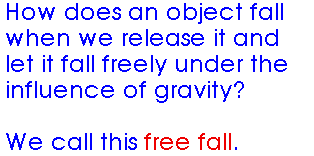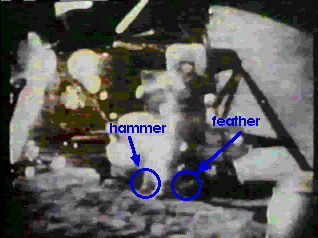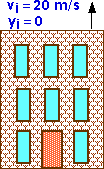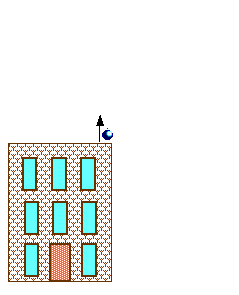

 |
|
|
As long as we can neglect air resistance, we find that all objects fall with the same acceleration, 9.8 m/s2.
|
|
|
Air resistance does make a difference--a big difference--if we drop a piece of paper or a feather in the air. In a vacuum, a feather and a coin fall together because there is no air resistance. |
|
 |
Apollo 15 astronaut David Scott dropped a hammer and feather which fell together since there is no air resistance on the moon's surface. |
|
This actual acceleration of 9.8 m/s2 is approximately 10 m/s2 (to within 2%) and that is much easier to use for calculations, so we will usually use that as an approximation. As long as we can neglect air resistance, we find that all objects fall with the same acceleration, 10 m/s2. |
|
 |
|
|
Let's throw a ball up with initial velocity of vi = 20 m/s and see what happens. Remember our approximation of g = 10 m/s2. |
 |
|
|
 |
|
|
|||
(c) 2002, Doug Davis; all rights reserved